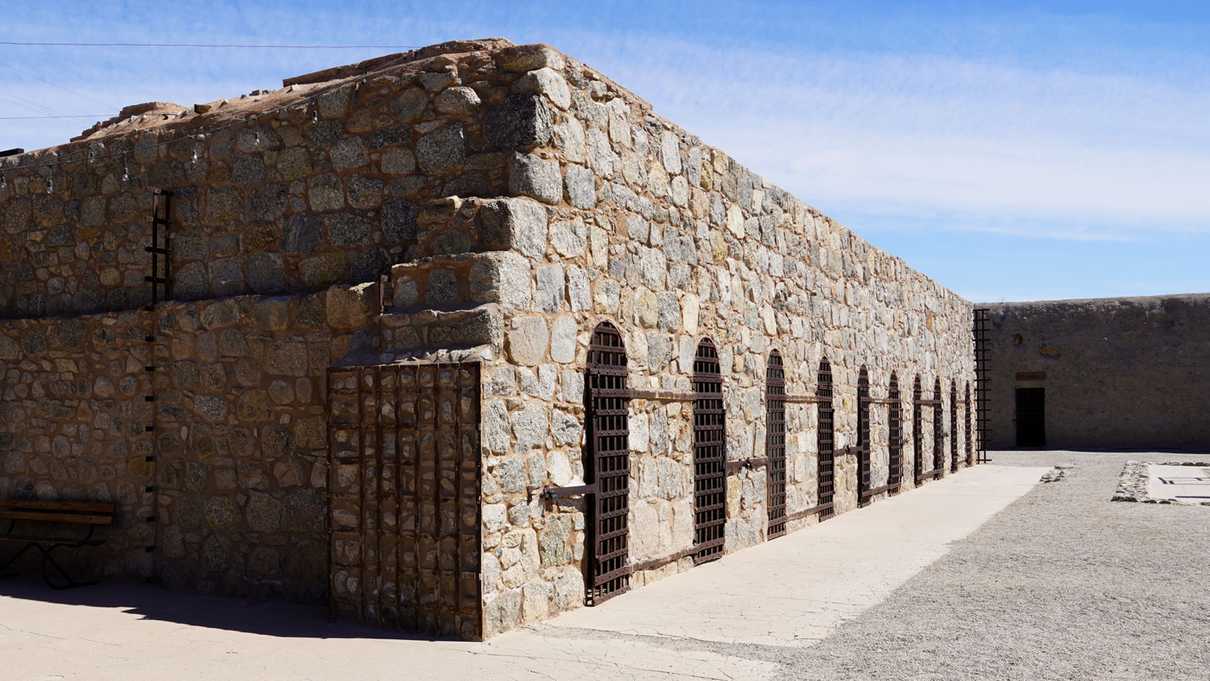The Hell Hole of Yuma Territorial Prison
History of the Prison
Yuma Territorial Prison was authorized in 1875 and opened to the first seven prisoners on July 1, 1876. Many of the prisoners were responsible for the construction of the prison, even building their cells. Life here was not easy. Outside the prison walls were miles of a vast desert and the Colorado River. Temperatures soared in the summer. Due to conditions, the prison earned the nickname of the “Hell Hole”.
The prison remained in operation for 33 years when in 1909 it was forced to close due to overcrowding. During its lifetime, the prison saw 3,069 prisoners serving sentences ranging from adultery to murder. From opening to closure, it remained a Territorial prison; Arizona would not reach statehood until February 14, 1912.
After the last prisoner left the prison, the complex continued to be used in numerous different ways. From 1910 to 1914, Yuma Union High School used the buildings after their school was damaged in a fire.
After students returned to their newly built school, the prison continued to find life in new ways. It was used as a county hospital from 1914 to 1923. During the Great Depression, families and the homeless slept in cells. The Veterans of Foreign Wars leased the guard’s quarters and set up their clubhouse there until 1960.
Finally, on January 1, 1961, the Yuma Territorial Prison State Historic Park opened to the public.
Some Notable Inmates
Pearl Hart
Pearl Hart, one of the more infamous female inmates at Yuma Territorial Prison, was one of only 29 women. Pearl made a name for herself as “the lady bandit” due to a stagecoach robbery. Once initially arrested, she escaped weeks later by creating an 18-inch hole out of the lath and plaster wall. After one acquittal and a subsequent conviction, Hart was sentenced to 5 years at Yuma Territorial Prison.
Being one of the only female prisoners, Hart used that to her advantage. Her cell was one of the largest and she was allowed reporters and guests to visit and take photographs of her. She was later pardoned on December 19, 1902. While the reason for this pardon is debated, it is said that she was released to avoid the scandal of a pregnancy resulting from an affair with the warden. To this day, Pearl Hart is known as a legend in women’s history.
“Buckskin” Frank Leslie
Another well-known inmate at Yuma Territorial Prison was Buckskin Frank Leslie. Leslie was a known gambler, bartender, miner, rancher, gunfighter, and con-man. He made quite the reputation for himself in the Tombstone area with numerous run-ins with the law involving murder. After one such incident, Leslie went on to claim self-defense and marry the man’s wife eight days later.
In July of 1889, Leslie, now divorced, was staying with Mollie Edwards at his ranch outside Tombstone and calling her his wife. He returned to his ranch one night drunk and found Mollie conversing in the company of another man. Leslie pulled out his pistol and immediately shot Mollie and her male friend. Leslie was arrested and eventually sentenced to life in prison. Transported drunk to Yuma Territorial Prison he served as convict 632 for nearly 7 years before receiving a full pardon by the Arizona Territorial Governor.
Pete Spence
Another prisoner with ties to Tombstone is that of Pete Spence. Spence fled to Arizona after being sought for involvement in a robbery in Texas, however, it wouldn’t be long before Spence was accused of another robbery. On September 8, 1881, a stagecoach on a route between Tombstone and Bisbee was held up by two masked men. US Marshall Virgil Earp, his brother Wyatt and Sheriff Behan’s posse went off looking for the responsible men. Finding a unique boot print at the scene, they were able to track down the owner to Frank Stilwell, a partner to Pete Spence. Both were arrested but charges dropped after some fellow Cowboy friends provided an alibi. Virgil Earp later brought charges again against the two for interfering with the mail system. This only escalated tensions between the parties.
In March 1882, Morgan Earp was shot and killed while playing billiards at a parlor in Tombstone. Spence’s wife implicated him in the shooting at the inquest of the coroner but as she was married to Spence the charges were dropped. During the infamous Earp Vendetta Ride, Spence turned himself in to Sheriff Behan figuring that he was safer behind bars than on the run from Wyatt and his men.
In June 1883, however, Spence would be sentenced to a five-year term at Yuma Territorial Prison after killing a man by pistol-whipping him in Georgetown, New Mexico while working as a deputy sheriff. He too was pardoned 18 months later by the territorial governor.




